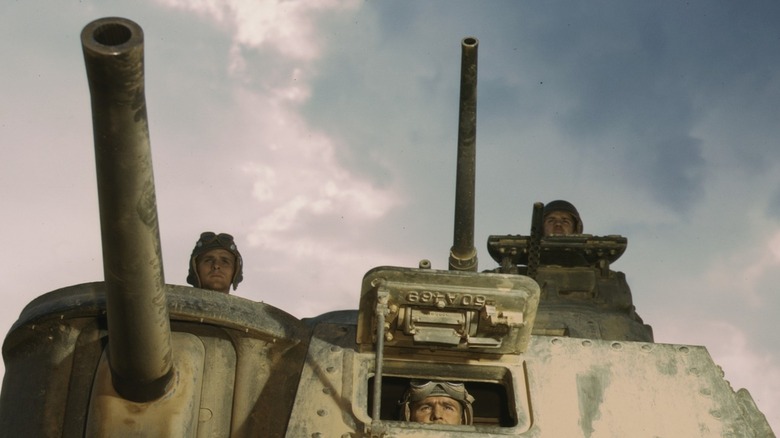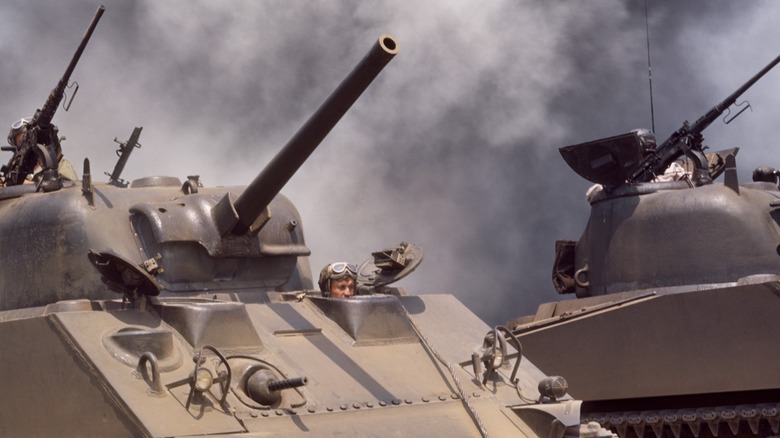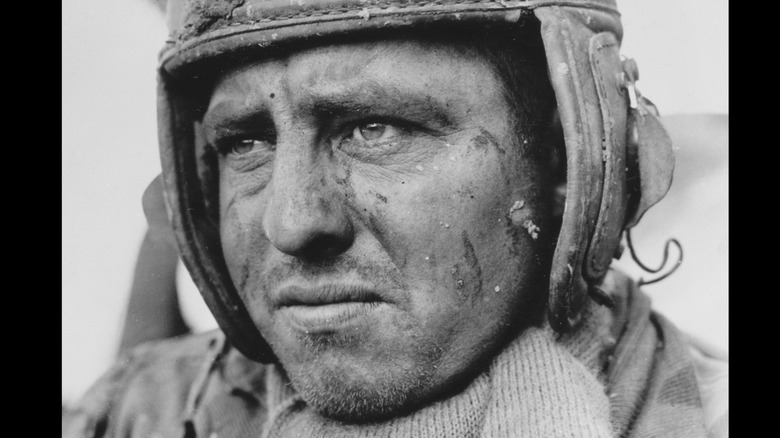Why Being A Tank Operator In WW2 Was Worse Than You Can Imagine
Since their introduction at the Battle of the Somme in World War I, tanks have solidified their position as the bully on the block. Armor plating, lethal firepower, and mobility were all game changers in the realm of war, so it should come as no surprise that these factors would be refined and modernized immensely by the militaries involved in World War II. But what of those who operated the tanks? While the armor, weapons, speed, and design of a tank had been and continued to develop during the war, the environment for tank operators was a nightmare.
Tank crew sizes varied depending on the model with there never being quite enough room. Take for instance the German Mark I that was part of the invasion of Poland on Sept. 1, 1939. It was lightly armed with machine guns and thin armor (no more than 15mm) that did little to protect its cramped crew of two operators, but its speed mattered more to Hitler at the time who remarked, "Now that I can use!"
Tank crews and their conditions
During World War II, American tank operators faced cramped confines, poor armor protection, and generally miserable conditions during their time in the M4 Sherman. It was manned by a crew of five that consisted of the tank commander, a gunner, a tank driver, a loader, and a bow gunner. The Sherman was produced in great numbers, so it quickly became the tank of choice for America's tracked vehicle needs. But its speed of production also sacrificed protection for its crew who would come to call it a "death trap." Its lack of proper armor, only 2.5 inches at the strongest point, meant that the crew was highly susceptible to penetrating ordnance and even more so, from fires that could be started from rounds that pierced the tank. These fires could and did burn many crewmen alive, thus making it a high point of anxiety for them all.
Aside from the risk of being burned alive, the general conditions inside a tank were dirty and dependent on the weather outside. Dusty conditions, such as those in North Africa, forced the crews of the Sherman to clean their air filters every 2 to 3 hours or risk a potential breakdown. In the late fall and winter of 1941, German tanks were faced with temperatures both inside and out that plummeted to -40 degrees, freezing their diesel engines and in some cases, the men inside.
Terrible conditions
The tank commander consistently faced a unique misery. His role demanded that he leave half of his body exposed outside the tank to check his surroundings in directing the tank, making him highly vulnerable to enemy fire. According to a report from historian James Holland, the tank commander felt "the greatest nervous strain resulting from constant tension, especially in combat."
The uncertainty of what was around the next bend or over the next hill gave extreme anxiety to the tank commander and his crew. Capt. Elmer R. Staib, a tank commander with the 610th Tank Battalion during the Battle of the Bulge, said of the fear, "You don't know what you are going to run into, what kind of mines, artillery fire, the infantry fire, anti-tank and tank fire."
Many tank crews liked the protection that a tank offered as opposed to that of infantry troops who were exposed and died by the thousands. This protection however came at a severe cost. Incessant noise, choking fumes that never properly vented out, excruciating heat in the summer, and biting cold in the winter along with the fear of being burned alive from any rounds that penetrated the tank, made for nerve-wracking conditions. The life of a tank operator in World War II is best summed up by British tanker, Maj. John Semken, who said, "It was exhausting."


